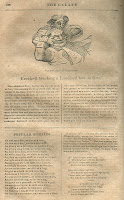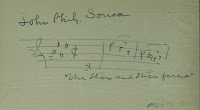The 18th century humor periodical Merry and Wise is a great example that underscores my comments in an earlier post about the rarity of 18th century humor periodicals. As I stated, many of even the most important magazines of this genre and era lack sufficient documentation and complete runs are not known. Only occasional random issues appear on the market and even the finest collections only have a few representative issues, despite original circulations of tens of thousands.
In the case of Merry and Wise, this is carried to the extreme. About 15 years ago I was fortunate to come across and purchase 14 issues at the Allentown paper show form a well known Virginia dealer. I have never seen or heard of another issue existing anywhere (and believe you me I've searched long and hard).
The editor and artist was Frank Bellew, whose distinctive triangular logo is well known to comic historians. Bellew was in a class with the likes of Thomas Nast and is credited, among other important contributions, with the first image of Uncle Sam, that appeared in The Lantern

(another rare humor magazine!) in 1853. James Mongomery Flagg's image that we all identify with did not appear until 1916 (yes, on another magazine, Leslie's), and was adopted for the famous poster "I Want You". Here's another image of Uncle from my collection that you probably haven't seen.

The fact that Bellew himself founded and edited this magazine is heretofore unappreciated. http://en.wikipedia.org/wiki/Frank_Bellew
My issues begin with Volume 1 Number 1 dated March 2, 1867. It became monthly as of July 1867 (a reliable sign of imminent demise of a magazine) and the last issue I own is v.1 no. 2 of the monthly series, August 1867.
As you can see from the images below, this was a high quality satirical periodical and story paper and the illustration is first rate.


The first image, obviously referring to "Seward's Folly" (Alaska) in 1867, reminds me greatly of the paintings of Eastman Johnson, whose influence on subsequent illustrators (in particular Norman Rockwell, whom I 've studied extensively) should be recognized. It should be pointed out that many of the greatest American "artists" of the 19th century, had successful careers as magazine illustrators, Frederick Remington and Winslow Homer to mention a few. In the twentieth century, as art became more diverse and sophisticated, illustration branched off into a separate discipline. Rockwell, one of the cornerstones of the golden age of American illustration, largely fostered by magazines, always considered himself an illustrator, inspired chiefly by the work of Howard Pyle. The influence of others, like Johnson, though, is quite clear.
case in point:



























